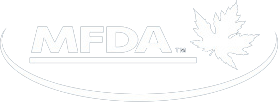IG Private Wealth Management | Jeff Somers & Associates
How to plan a tax-efficient retirement withdrawal strategy
By IG Wealth Management | Retirement
When it’s time to retire, many Canadians have several sources of income. We look at which sources you should draw from first to help minimize taxes.

How to plan a tax-efficient retirement withdrawal strategy
Withdrawing the right retirement income at the right time could help save you thousands
The move into retirement can be a challenging one for many Canadian retirees. You suddenly have to change your mindset from making money and saving it, to drawing from your savings to provide income.
Many retirees have several sources of income in retirement, but often don’t realize that the sequence of withdrawals — which sources you withdraw from first — can have major tax implications.
It’s important to be aware of your potential tax rate in retirement in Canada. One of the key retirement withdrawal strategies is to maintain a consistent income level, in the lowest tax bracket possible. This involves juggling your income from taxable and non-taxable sources so as to avoid going from one extreme to the other (where you might pay zero tax one year and a high rate of tax in another).
Let’s take a look at all the potential retirement income available to you and the most tax-efficient way to withdraw it.
The types of retirement income available
The time when many Canadians could rely on just their company and government pension for retirement income is long gone. Retirees often have several sources of income now, which can be fully taxable, partially taxable (such as capital gains) or tax free. Here’s what you need to know about the various retirement income sources and the kind of retirement withdrawal strategies you should consider when withdrawing from them.
Canada Pension Plan/Quebec Pension Plan (CPP/QPP): You’ll have to pay tax on this income, with the actual amount dependent on your tax bracket (which in turn depends on your total taxable gross income in retirement).
One important aspect of CPP/QPP to consider is when you start to draw from it. You can start as early as age 60 or as late as 70. The downside of taking CPP/QPP early is that you lose 7.2% of its value for every year you draw from it before the age of 65. If you start taking it at age 60, it will be 36% less than if you’d waited until you were 65.
If, however, you delay taking CPP/QPP, the amount increases every year by 8.4%, to a maximum of an extra 42% by the age of 70 and every year afterwards (there is no benefit of delaying it any longer). This retirement withdrawal strategy would not only increase your income from CPP/QPP, it would also delay some of your taxable income.
Studies have shown that, for most Canadians who live an average lifespan, it would be financially beneficial to wait until age 70 to take CPP/QPP (so long as they are in good health and have the means to delay receiving CPP/QPP).1
Old Age Security: This is also considered taxable income, and while you can’t take it earlier than age 65, you can also delay it up to age 70, when it would increase by 36% (again, there’s no benefit in delaying it beyond age 70).
Also, if you have taxable income over a certain amount (for 2022 it was $81,761) you will start having to pay back some or all of your OAS (known as the OAS clawback), so this is another incentive to maintain a consistent amount of overall retirement income.
Company pension: This is also treated as taxable income. You may get a $2,000 pension credit after age 65, which will help lower your tax liability a little.
Registered Retirement Savings Plan (RRSP)/Registered Retirement Income Fund (RRIF): One of the most tax-efficient ways to draw money from your RRSP is to convert it into a RRIF. Otherwise, you could find that you have to pay considerably more in tax. By December 31 in the year you turn 71, you have to convert your RRSP into a RRIF (or cash it out or convert it into an annuity). You would then have to withdraw the annual minimum amount (this starts at 4% of your total investments at age 65 and increases until age 90, when it remains at 20% thereafter).
Tax-Free Savings Account (TFSA): This is a very flexible source of income because all income growth is tax free and you can withdraw as much from it as you want, at any time, completely tax free. You can withdraw from your TFSA to increase your non-taxable income, so as to keep your taxable income low, or to provide income to help you delay taking CPP/QPP and OAS.
Non-registered savings: These are investments that don’t sit in a registered account and so don’t benefit from tax-free growth. These can also be a good flexible source of income, because you only pay tax on what is earned within the account.
Also, if your portfolio is conservative or moderate, it will probably contain a lot of fixed income assets, likely with little in capital gains, so the tax could be minimal. For this reason, non-registered savings can play an important part in retirement withdrawal strategies.
How to create your retirement withdrawal strategy
Your financial advisor can take a look at all of your potential sources of retirement income to come up with the most tax-efficient retirement withdrawal strategies and a long-term plan. As mentioned, maintaining a consistent amount of taxable income is key.
One RRSP/RRIF withdrawal strategy can be to maximize withdrawals from them early on in your retirement, especially if you intend to delay taking CPP/QPP and OAS. This will have the added benefit of reducing your overall RRIF amount, which will reduce the taxable minimum withdrawal amount.
It often doesn’t make sense to delay drawing from your RRSP/RRIF until the last moment. This sudden jump in taxable income can bring you into a higher tax bracket, whereas blending it in with other sources of income can keep your total income consistently in a lower tax bracket.
Another RRIF withdrawal strategy, if you don’t need all of your RRIF income in the early years, is to put that excess cash into a TFSA to provide you with more tax-free income growth and withdrawals in the future. Furthermore, if you have a spouse or common-law spouse, you can also put the excess money into their TFSA if you’ve reached your own TFSA contribution limit.
Remember, once you start drawing from OAS, you’ll also need to try and keep your total taxable income under the OAS limit, otherwise it will start to be clawed back.
Another important consideration is pension splitting with your spouse. You could share up to 50% of your pension income with them; this makes sense if they are in a lower tax bracket. This will mean that you will not only pay less tax but could also reduce the risk of OAS clawback.
Retirement withdrawal strategies: a case study*
- Brigitte needs $55,000 per year in retirement income.
- In the early years of her retirement, she uses income from her RRIF, which is fully taxable.
- She also uses some income from her non-registered savings (paying tax on only 50% of capital gains and zero tax on the principal that she saved).
- Her taxable income is $45,000, so she tops her income up with her TFSA savings.
- When her non-registered savings run out, she is able to draw CPP and OAS to make up the difference and still stay within the same tax bracket.
* For illustrative purposes only.
Make sure your retirement income is tax efficient
An IG advisor can take account of all of your retirement income sources and work out exactly which you should draw from first to maintain a consistent retirement income and minimize your taxes. We can also advise on the best time to start drawing CPP/QPP and OAS.
Connect with the team at Jeff Somers & Associates today to discuss the most tax-efficient retirement withdrawal strategy tailored to your specific circumstances.
Sources:
1 FP Canada: Get the most from the Canada and Quebec Pension Plans by delaying benefits.
Society of Actuaries/Canadian Institute of Actuaries: The CPP take-up decision.
Written and published by IG Wealth Management as a general source of information only. Not intended as a solicitation to buy or sell specific investments, or to provide tax, legal or investment advice. Seek advice on your specific circumstances from an IG Wealth Management Consultant.

Author
Jeff Somers
CERTIFIED FINANCIAL PLANNER professional, RRC | Executive Financial Consultant
As a CERTIFIED FINANCIAL PLANNER professional since 2004 and frequent financial educator, Jeff specializes in tax-efficient portfolio management, providing sound advice and financial support to corporate or small business owners and retirees.
Written and published by IG Wealth Management as a general source of information only, believed to be accurate as of the date of publishing. Not intended as a solicitation to buy or sell specific investments, or to provide tax, legal or investment advice. Seek advice on up to date withholding rules and rates and on your specific circumstances from an IG Wealth Management Consultant. Trademarks, including IG Wealth Management and IG Private Wealth Management are owned by IGM Financial Inc. and licensed to its subsidiary corporations.
Share This Article On Your Channels



















